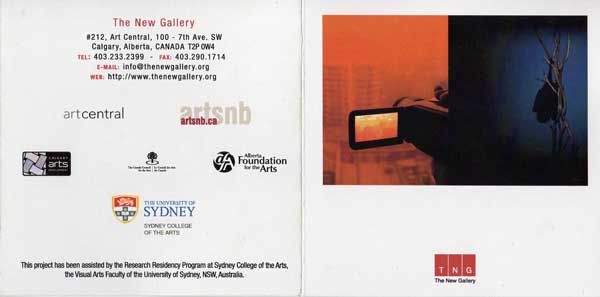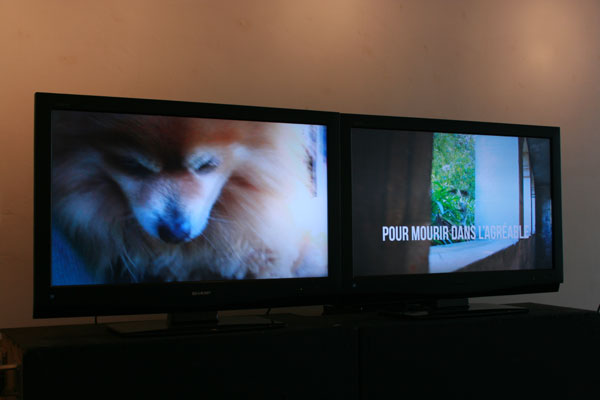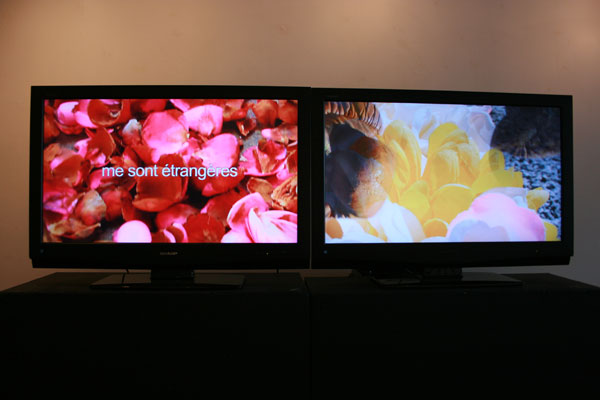To End All War Anthology (2018)
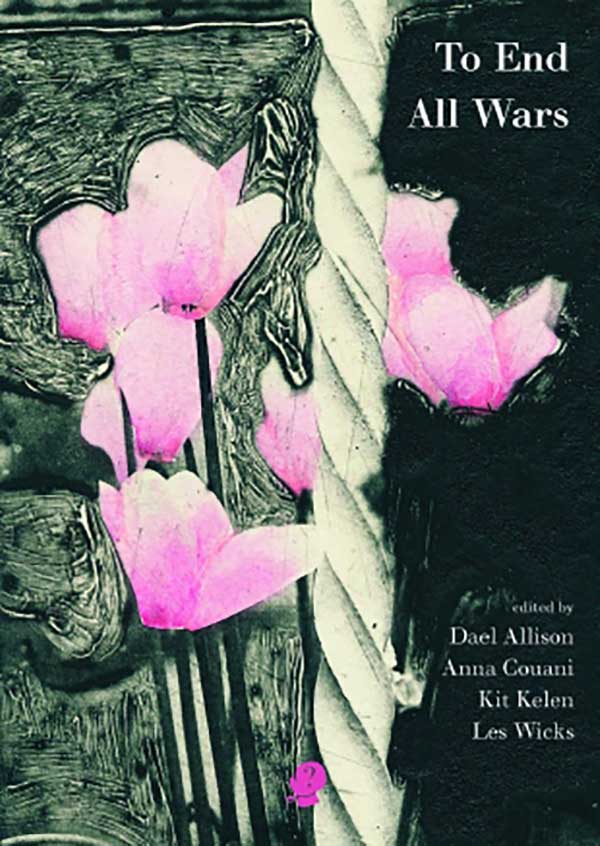
I am very happy that one of my poems has been included in the anthology To End All Wars. The book is published by Puncher & Wattmann and edited by Dael Allison, Anna Couani, Kit Kelen, and Les Wicks with a launch at The Shop Gallery in Sydney – 3 pm, Saturday 27 October – 112 Glebe Point Road, Glebe.
‘To End All Wars’ was a phrase applied hopefully during ‘The Great War’. Its various permutations were meant to suggest that this one might be the last war of all. How quickly the phrase became ironic. How many wars have followed! The words ‘to end all wars’ must remind us today that all armed conflict is a vast social catastrophe. The centenary of the World War I Armistice comes with a barely veiled triumphalism in the countries that were victorious one hundred years ago. It was that triumphalism, and the failed peace that followed it, which led onto new catastrophes in World War II and then the Cold War. Now, well into the 21st century, with ever uglier nationalisms raising their heads everywhere, it is time to critically examine the Armistice of one hundred years ago, and its meaning for Australia and for the world, then and now.
This collection contains work from Australasia’s leading poets, some of whom have made a particular focus on conflict like Jennifer Maiden & Geoff Page. But a clear goal from the beginning was to have a truly diverse collection to fully give the flavor of our society as it is now and the impact conflict has on it. This was in part achieved by an open call for submissions which yielded a number of valuable surprises which would have been otherwise overlooked.
An Earshot programme based on the anthology will air on Radio National Mon 5th November 11 am on Radio National, repeated Sat 10th November 1.30pm.
https://puncherandwattmann.com/books/book/to-end-all-wars
Illumination (2016)
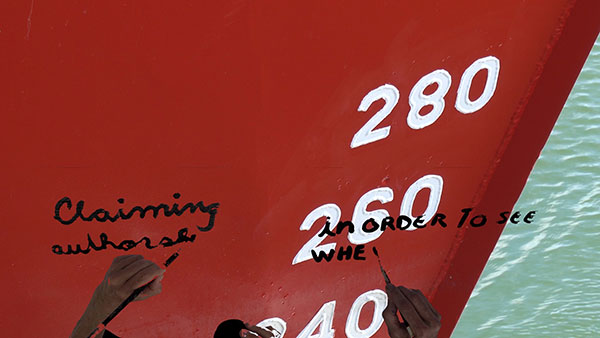
Illumination: Valerie LeBlanc and Daniel H. Dugas
for the Poetic License Week, September 3-11, 2016
For this collaborative work, we have juxtaposed texts to appear as graffiti on the hull of a boat. The left and right hands both speak to the challenges of forging a path through life. The audio, wind from the sea, speaks for everyone.
Illumination from Basic Bruegel on Vimeo.
Cafe Poet at the Blackwattle – week five
Cette semaine : trois hommes souriants, une peinture de l’époque coloniale avec un pli dans le paysage et finalement Gelibolu, des soldats et des biscuits. | This week: three guys smiling, a colonial picture of Australia with a fold running in the middle of the landscape and Gelibolu, soldiers and biscuits.
May, 30 2013
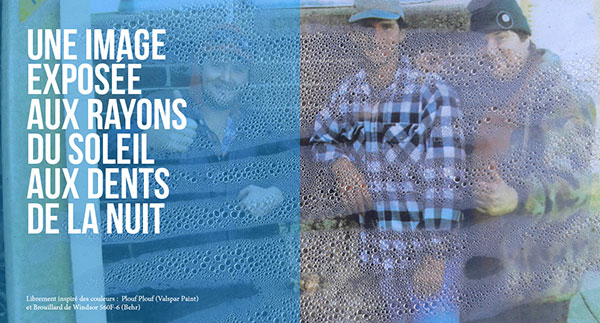
Loosely based between Splish Splash (Valspar Paint) and Windsor Haze 560F-6 (Behr)
Librement inspiré des couleurs : Plouf Plouf (Valspar Paint) et Brouillard de Windsor 560F-6 (Behr)
May, 29 2013
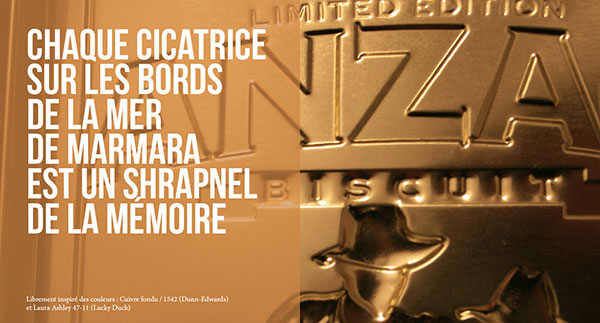
Loosely based between Melted Copper / 1542 (Dunn-Edwards) and Laura Ashley 47-11 (Lucky Duck)
Librement inspiré des couleurs : Cuivre fondu / 1542 (Dunn-Edwards)et Laura Ashley 47-11 (Lucky Duck)
May, 24 2013
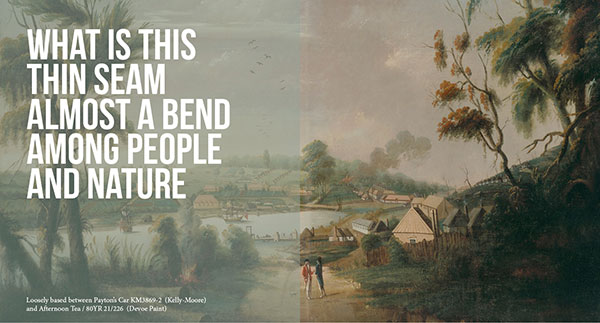
Loosely based between Payton’s Car KM3869-2 (Kelly-Moore) and Afternoon Tea / 80YR 21/226 (Devoe Paint)
Librement inspiré des couleurs : L’automobile de Payton KM3869-2 (Kelly-Moore) et Thé d’après-midi / 80YR 21/226 (Devoe Paint)
What We Take With Us – TNG (2012)
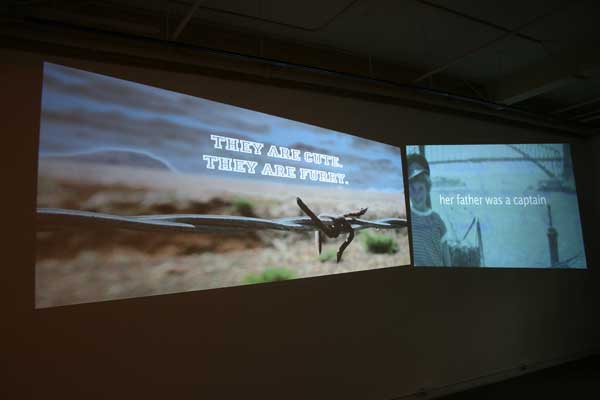
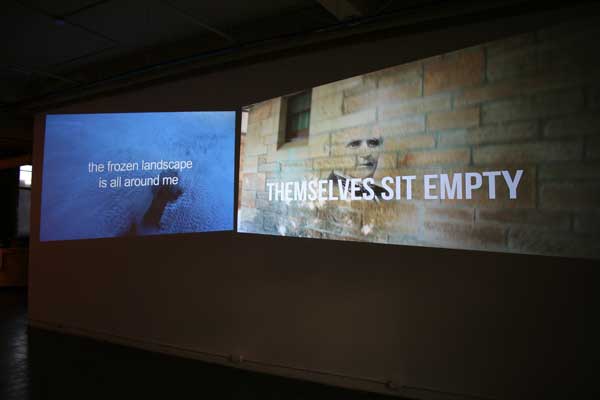
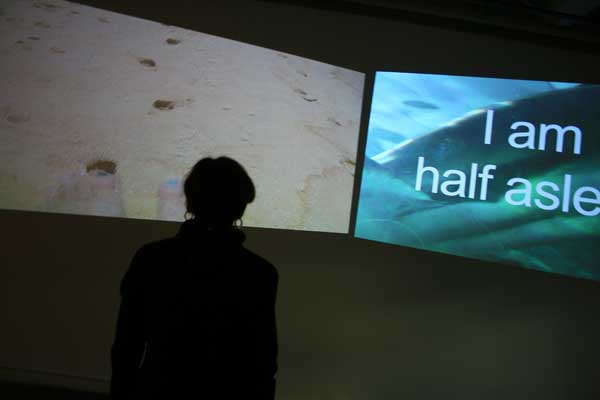
We just came back from Calgary where our video installation What We Take With Us is being presented at The New Gallery. The opening was on January 5th and the exhibition will continue until February 4th 2012. We stayed at the John Snow House which is administrated by TNG. It is an extraordinary place loaded with history.
Thanks to everyone at TNG: Tim, Jessica, Noel, Kathryn, Su, Volunteers – and all who came out to the opening! Our talks will be posted online next week.
Our installation is also part of This Is My City Festival, an interdisciplinary festival of art from the margins.
Excerpt from the essay written by Tomas Jonsson:
Recurrent waves of colonialism and globalization have smoothed and prescribed our encounters with places. For the traveler, points of difference, or of distinction, are sought after, perhaps increasingly so, or patronizingly handed over. Monuments, historical sites and natural landmarks are increasingly oriented to ‘the amused eye’, which the traveler can then compare and develop a discourse “for the comparative connoisseurship of places.”
In What We Take With Us, Dugas and LeBlanc explore a complicated, contingent terrain, whose borders extend into and circumvent geographies, both physical and social, ‘here’ and ‘away’. Encompassing individual catalysts, personal experiences, mental and body memories, the resulting landscape can’t be easily anticipated or defined.
The videos mimic the internal ordering and filtering of places. Each series of vignettes display a personal vision, reflecting the difference in interpretation even by two people so closely aligned. They follow in Dugas and LeBlanc’s collaborative approach in their production and presentation, but in this case the associations are left to chance due to an unsynched running time. The result is a constantly shifting dialogue between the videos, with unknown permutations and combinations.
What We Take With Us – Ce qu’on emporte avec nous (2011)
• Galerie E DANS L’A Gallery, Moncton, NB, 2011
What We Take With Us
In this two channel video installation, each artist created a program of short videos exploring different aspects of memory and presence. The programs are projected side by side.
An exploration of internal and external experiences characteristic to travel and displacement, the project grew from a research residency at the Sydney College for the Arts in Sydney, Australia – September / October 2009. During our stay, we researched urban, as well as more sparsely populated coastal and inland geographies of New South Wales. Starting from our personal exploration and interviews with others, we looked for indications of what it is like to live in a place; to call it home, and at displacement / shifts evoked by the experience of physically repositioning oneself in the world.
The research began from the perspective of examining the concept of home and what it means to individuals. Over time, a discussion of memory and presence, of being in the world developed toward the realization that what we take with us might not be as important as what, or whom we sometimes leave behind. As the nature of living leads us forward, we are constantly required to face current events and circumstances; to grow and evolve within the present. Ideas are shaped through interaction; through awareness of the importance of what we take with us in memory, and how interaction within social climates changes the point of view. According to progress, of meeting life challenges; friends, family and familiar surroundings sometimes move into memory, and that becomes the only way to experience them again. In essence, this is also part of the discussion of nomadism and contemporary life.
While developing strategies for conveying messages relating to the human experience, we have worked to open up half dream / half waking realities.
For more information see website
Ce qu’on emporte avec nous est une installation vidéo à deux canaux. Chaque artiste a créé un programme de vidéos examinant différents aspects de la présence et de la mémoire.
Ce projet sur le déplacement, la mouvance et le voyage, a pris forme et s’est développé lors d’une résidence de recherche au Sydney College for the Arts en Australie — septembre / octobre 2009. Pendant notre séjour, nous avons effectué une série d’entrevues à Sydney ainsi que sur le territoire de la Nouvelle Galles du Sud. Nous souhaitions explorer les questions relatives au sentiment d’appartenance à une région, à une collectivité ainsi que sur l’expérience nomade.
Les idées contenues dans ce projet sont nées de l’interaction entre individus, elles se sont développées au travers du filtre de la mémoire et du souvenir ainsi que sous l’effet transformateur du contexte social. Tout en développant des stratégies de transmission relatives à la nature interne et externe de l’expérience humaine, nous avons tenté d’ériger un lien entre ce qui existe et ce qui est senti, entre le rêve et la matérialité.
Notre recherche nous a amenés à réaliser que quelquefois, ce que nous emportons avec nouspourrait ne pas être aussi important que ce qui est laissé derrière.
Pour plus d’information : site web
Ce qu’on emporte avec nous, What We Take With Us (2010)
Valerie LeBlanc et moi avons terminé notre nouveau projet : Ce qu’on emporte avec nous, une installation vidéo à deux canaux examinant différents aspects de la présence et de la mémoire. Une première exposition aura lieu à la Galerie E DANS L’A au mois de janvier 2011. Pour plus d’information :http://whatwetakewithus.wordpress.com/
Valerie LeBlanc and myself have just finished our new project: What We Take With Us, a two channel video installation exploring different aspects of memory and presence. A first exhibition is scheduled at the E DANS L’A Gallery in January 2011. For more information: http://whatwetakewithus.wordpress.com/
Red (2010)
Le 23 septembre 2009, une tempête de sable rouge s’est abattue sur la ville de Sydney en Australie. Pour quelques heures, la ville était d’un rouge étrange et fantastique.
On September 23, 2009, a dust storm blanketed the city of Sydney, Australia. For a few hours the city glowed red.
Daniel H. Dugas
Archives
Blogroll
- A.I.R. Vallauris
- ACAD
- Adobe additional services
- Adobe Creative Cloud
- AIRIE
- Amaas
- Amazon Author Central
- ARTothèque
- Australian Poetry
- Basic Bruegel
- Bitly
- CCCA
- CDBaby
- Cycling 74
- Dissolution
- Éditions Prise de parole
- Emmedia
- eyelevelgallery
- FAVA
- Festival acadien de poésie
- Festival FRYE Festival
- FILE – Electronic Language International Festival
- Freeware list
- Fringe Online
- Galerie Sans Nom
- Gotta Minute Film Festival
- Instants Vidéo
- JUiCYHEADS
- Kindle Direct Publishing
- Klondike Institute of Art and Culture
- La Maison de la poésie de Montréal
- La Maison de la Poésie et de la Langue française Wallonie-Bruxelles
- Laboratorio Arte-Alameda
- Le Centre Jacques Cartier
- Liberated Words
- Maison Internationale de la Poésie – Arthur Haulot
- MediaPackBoard
- Miami Book Fair International
- Monoskop
- Mot Dit
- NSCAD University
- Paved Arts
- PoetryFilm
- Portail des auteurs du Nouveau-Brunswick
- RECF
- Revue Ancrages
- Salon du Livre du Grand Sudbury
- Sculpture Space
- Subtropics.org
- Sydney college for the arts
- The Centre for Contemporary Canadian Art
- The New Gallery
- Trevigliopoesia
- tumbler-documents
- V Tape
- Valerie LeBlanc
- VideoBardo
- Void Network-Κενο Δίκτυο
Categories
- #covidpoèmes
- Advertisement
- AIRIE
- Ancrages
- anthology
- Anthropocene
- Architecture
- Around Osprey
- art
- Article de presse
- arts visuels
- audio
- Australian Poetry
- Basic Bruegel Editions
- Book
- book fair
- Cafe Poet Program
- Ce qu'on emporte avec nous
- Citations gratuites
- Collaboration
- commentaire
- commentary
- Compte rendu
- conférence
- Conservation Foundation of the Gulf Coast
- COVID-19
- Critique littéraire
- culture
- Daniel Dugas
- Design
- Édition Michel-Henri
- Éditions Perce-Neige
- Éloizes
- Emmedia
- emoji etc | émoji etc
- Environnement
- essai
- essay
- Everglades
- Exhibition
- festival
- Festival acadien de poésie
- Festival Frye Festival
- FIPTR
- Flow: Big Waters
- Fundy
- Habitat
- installation
- Instants Vidéo
- interactivity
- journal
- JUiCYHEADS
- Kisii
- L'Esprit du temps
- laptop
- Leaving São Paulo
- lecture
- Livre
- logos
- Magazine
- Miami Book Fair
- Moncton 24
- novel
- OASIS
- oil spill
- perception
- performance
- Photo
- poésie
- Poetic Licence Week
- Poetry
- politics
- politique
- press
- Prise de parole
- Revue Ancrages
- salon du livre
- sculpture
- Sculpture Space
- sound
- Souvenirs
- Spirit of the Time
- Style & Artifacts
- Symposium d'art/nature
- talk
- television
- The New Gallery
- Uncategorized
- Valerie LeBlanc
- vidéo
- vidéopoésie
- Videopoetr/Vidéopoésie
- videopoetry
- visual arts
- What We Take With Us
- youth literature






